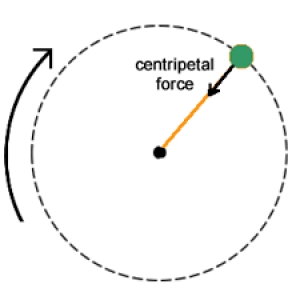Centripetal Force explained with an example.

Let us understand Centripetal and Centrifugal Forces.
Centrifugal force describes the tendency of an object following a curved path to fly outwards, away from the center of the curve. It's not really a force; it results from inertia — the tendency of an object to resist any change in its state of rest or motion.
Centripetal force is a real force that counteracts the centrifugal force and prevents the object from "flying out," keeping it moving instead with a uniform speed along a circular path.
Now the centrifugal force is not a “real” force — the tendency to fly outwards is observed because objects that are moving in a straight line tend to continue moving in a straight line. This is called inertia, and it makes objects resistant to the force that makes them move in a curve.
This means that there is no real force called the centrifugal force and it is an imaginary force. Centrifugal force arises because of inertia. The object wants to just fly off in a straight line but there is a force called centripetal force that stops an object from flying away, In other words centripetal force works against the centrifugal force.
Now lets see an example
A potter is shaping an utensil of mud on his potters wheel.
The wheel exerts an inwards centripetal force on the mass of the clay. The potter's hands exert an additional inwards force that deforms and shapes the clay. Remember here we dont talk about centrifugal force since it is fictituous.
